Irish Setter: breed characteristics, temperament and grooming tips
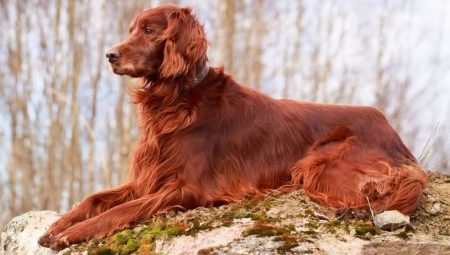
The Irish Setter is a breed loved by many dog breeders. It is a loyal friend, charming and friendly companion, an excellent hunting companion. Such dogs are distinguished by developed intelligence, active, but intelligent behavior and luxurious appearance. Let's get to know more closely the representatives of this breed, learn about the features of their character, requirements for maintenance and care.
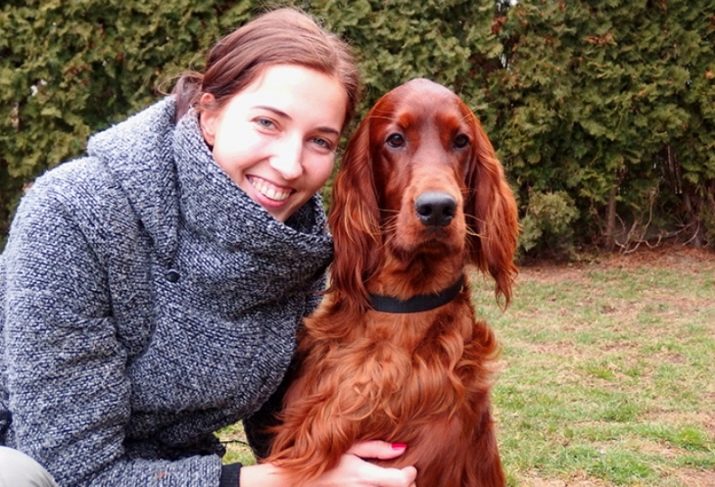
History
The breed originated a long time ago. According to experts, almost all the cops can be called the descendants of "ash". The youngest progenitors are pointers. It was from them that the black and white English setter was derived. It happened in the 16th century. Later, breeders created an Irish setter, which they called red.
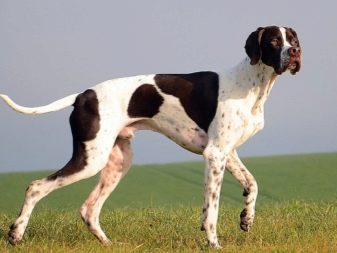

The genes of the best hunting dogs were used to develop a new breed. These included Irish Water Spaniels, English Setters, Gordon Setters, and Bloodhounds. Different breeders competed with each other to get the best representatives of the new breed. This is how several varieties of setters appeared.

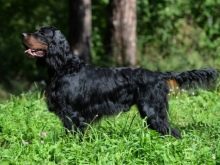
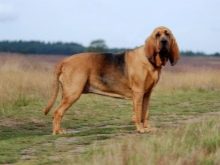
It is known that there were both red and white “Irish” and red and black. As a result, the option with a monochromatic red six, cast in red and chestnut tones, was recognized as the most successful. This color was fixed in the breed standard.
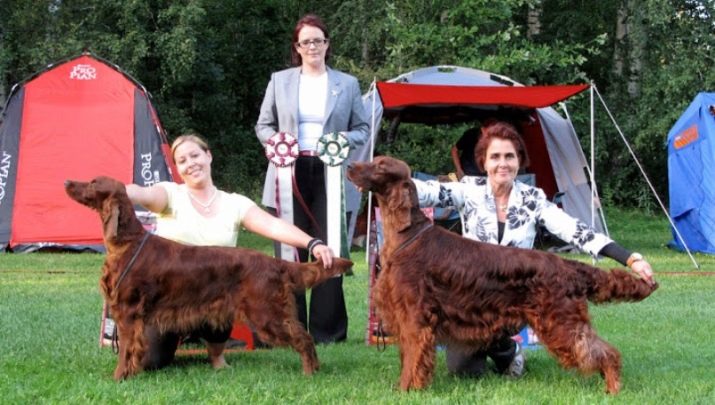
The main goal of the breeders was to create ideal companion animal for bird hunting... This is not surprising, because in those days hunting was one of the main entertainments of aristocrats. In this regard, it was planned that the representatives of the future breed will be smart, fast, hardy, with excellent hearing and smell.Also, such dogs should not be afraid of water, noise (for example, shots).
It was decided that the optimum are the average size of the hunting animal, harmonious proportions and thick coat.

The work of the breeders has borne fruit. The Irish setters turned out just like that. Thanks to a set of excellent qualities combined with a friendly character, pets quickly gained popularity.
The participation of "Irish" in exhibitions began in the 50s of the XIX century. The lack of an approved standard made it difficult for judges to evaluate dogs, but it was impossible to ignore the dignity of the dogs.
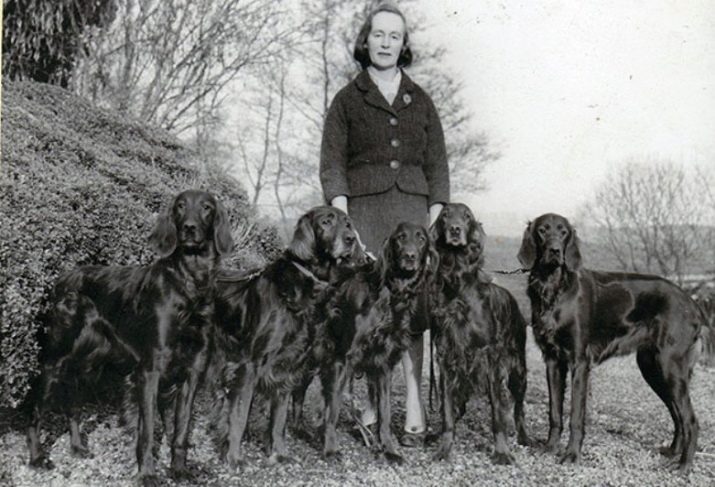
In the 70s, the first official breed clubs began to appear. First it happened in England, then in Ireland. American experts have divided the breed into 2 subspecies. The first included show-class pets, whose main task was to participate in exhibitions. In the second, working animals were united.

Russian breeders, on the contrary, tried to combine all the qualities in one pet. As a result, hunting dogs were bred with a calm character and excellent appearance. This is the international standard that was approved in Dublin in the 80s of the XIX century.
The Irish Reds are still very popular today. They are turned on not only by hunting lovers, but also by ordinary dog breeders who like active, but restrained in behavior animals with a good disposition.

Description
The thoroughbred Irish Setter is a sophisticated animal with long legs and a proud bearing. The dog's movements are swift, but smooth. The body is proportionally developed, muscular. Animal fur, like satin, shimmers in the sun in all shades of orange, red and brown. The splendor and richness of the coat depends on the breed line. Workers look a little more modest than their show counterparts.
The representative appearance has determined the popularity of this breed among advertising creators. Irish beauties often appear in commercials, on dog food packaging and on billboards.

The height of male setters at the withers is from 58 to 68 cm. The height of females is from 55 to 63 cm. The weight of animals varies from 26 to 32 kg. Girls are more petite and graceful. Boys are stronger and more effective.
Representatives of this breed mature slowly. Full mental maturity occurs in dogs after they reach the age of three.
The average lifespan of Irish Setters is 12 years. Some individuals live up to 15 years.
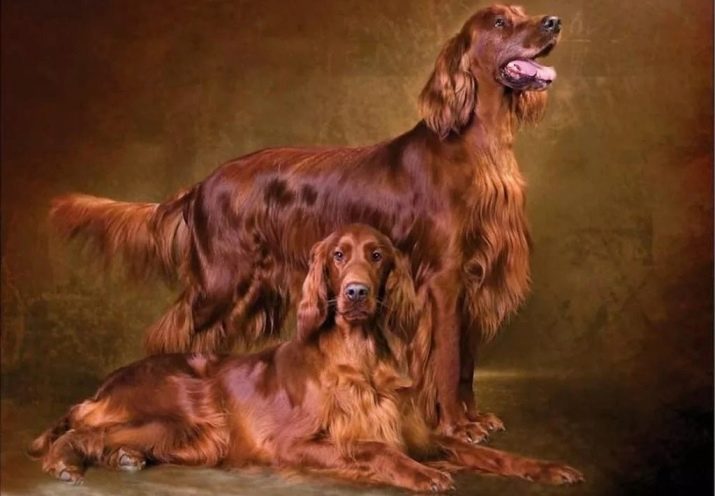
Let's consider the characteristics of thoroughbred individuals in more detail.
Head
The dog's muzzle is narrow, elongated, almost square at the nose. Skull with pronounced superciliary arches, smooth occiput. Correct bite - "classic scissors". The nose is dark and medium in size. The eyes are almond-shaped, slightly sloping. Standard color - hazel or hazel. The look is good-natured. The ears are set low, of medium length, hanging down on the sides of the head. They are soft to the touch, well pubescent.
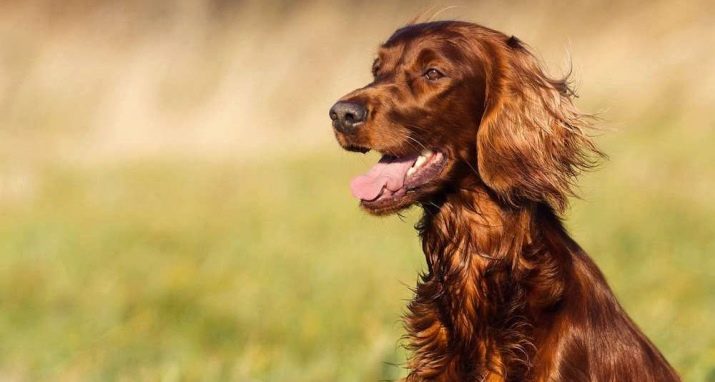
Frame
The neck is rather long, strong but graceful. It allows the dog to hold its head high, providing a good view and regal posture. The body is well proportioned. The back is straight, the belly is tucked up. The tail is of medium length, set low, pubescent, hanging freely.
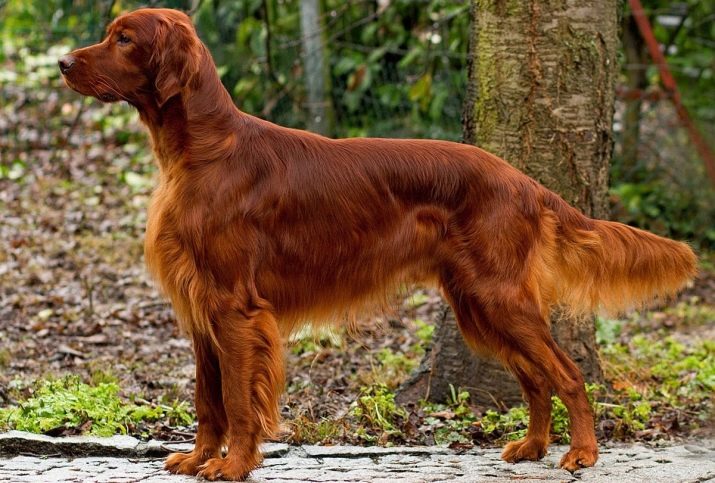
Limbs
Paws are long, straight, muscular, parallel to each other. The hind legs give a powerful push. Moves when walking and running are springy, soft.

Wool
Adult dogs have a beautiful smooth coat. On the head, neck and back, the coat is short. The outer paws, ears, chest, belly and tail are decorated with a long silky fringe.

Color
A solid chestnut color is preferred. Black shades are unacceptable. Small light spots on neck, chest, forehead or muzzle are allowed.
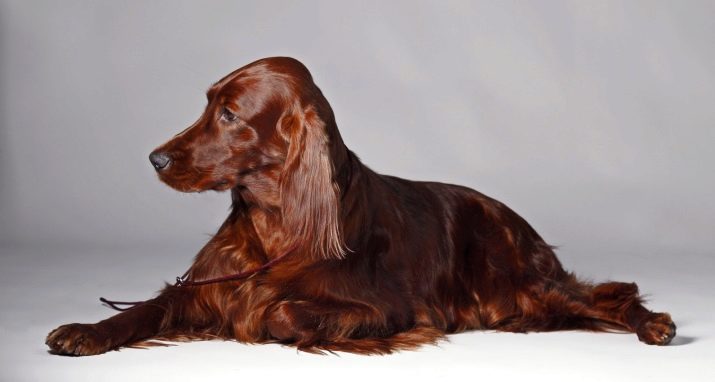
It is worth noting also the exterior signs that can lead to the disqualification of the dog at the show.The disadvantages include too long or curly hair, a wide muzzle, a short neck, ears crowded with a tube or hanging with burdocks. Also considered as defects are close-set eyes, irregularities of the back, too thin a tail in the shape of a sickle. Color deviations, depigmentation of lips and nose are not allowed.

Character traits
The Irish Setter is a very energetic dog. Puppies are especially active, which is impossible not to notice in a city apartment.
Trying to get the baby to become more calm is useless. You just need to wait for the setter to grow up.
Adults behave with dignity. They show activity in suitable situations - for a walk, during games. Nevertheless the emotionality of the dog is preserved until the venerable age. They are very inquisitive, affectionate and sociable.

At home, the dog can walk on the heels of the owner, interested in all his affairs. At the same time, unobtrusively, but persistently, he will demand attention and affection. Animals love children. The dog is able to become a loyal friend for any family member. "Irish" also accept other pets kindly. If for the whole day the dog could not communicate with anyone, he may become sad.
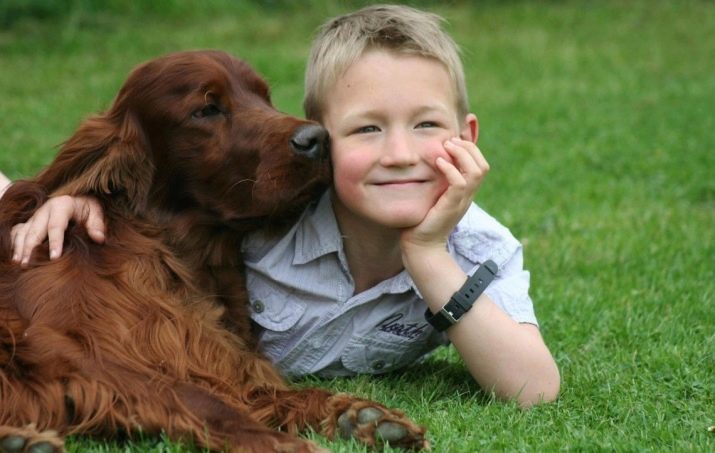
To strangers, representatives of this breed are too trusting. They easily make contact, they are not aggressive.
However, do not think that the "Irish" are stupid and spineless. If they need something, they are quite capable of showing firmness and even stubbornness in order to insist on their own.
True, at the same time they do not become assertive, but simply go to the cunning.
Setters love to walk, frolic in nature. They like to swim in the summer, so walks to the open reservoir will be a real treat for them.
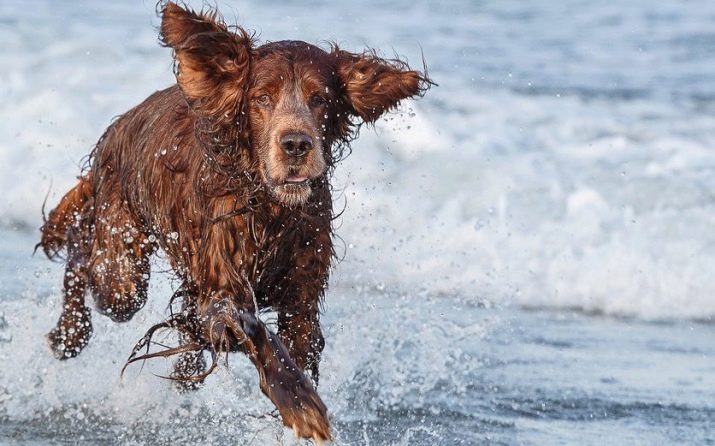
Advantages and disadvantages
The goodwill and even some naivety of the dog is good because a person acquires an affectionate and gentle four-legged pet. On the other hand, it negates the watchdog qualities of the Irish setters. If you are looking for a tough defender, it is better to choose a different breed.
When it comes to hunting skills, this is where the "Irishman" can come in handy. The main thing is to choose a puppy from the "working" breed line. Such a dog will do an excellent job of detecting game.
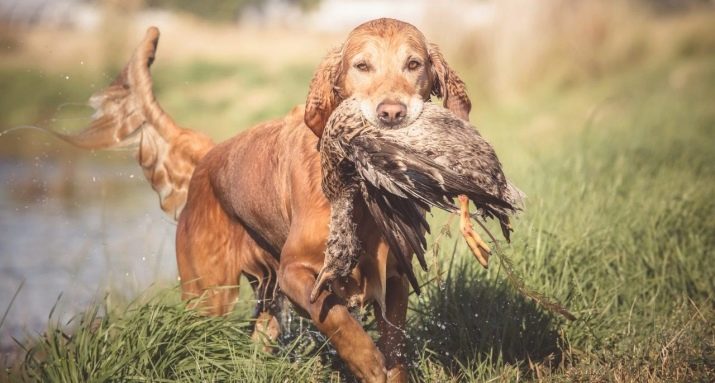
The animals are pretty athletic. Therefore, if you are a couch potato and you need a calm pet, which is enough for a 15-20 minute walk, this breed is not for you.
It is not worth getting such a dog for those who work a lot and are rarely at home. Of course, if you have a large family, other family members will be able to keep the furry pet company.
If you plan to leave the dog alone for a long time, get ready for the fact that he will be sad and offended.
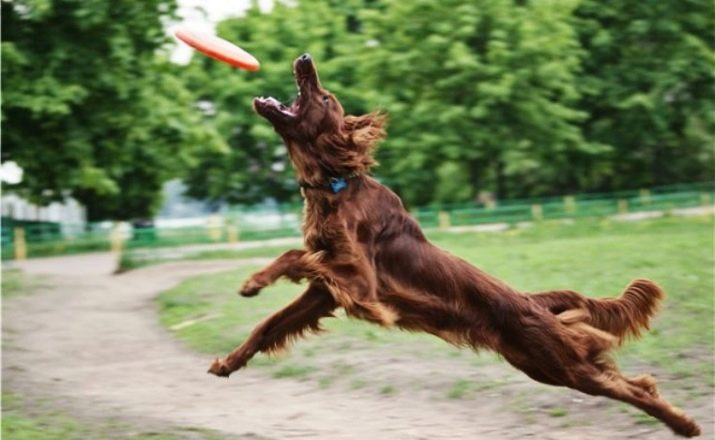
Finally, it's worth noting that the chic look of the Irish Red Setter takes an investment of time, effort, and even finances. To keep the hair of the four-legged handsome man smooth and shiny, it is necessary to comb it regularly and wash it using special products. Don't underestimate the role of quality nutrition and vitamins.
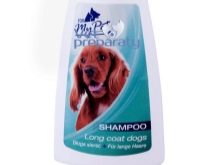

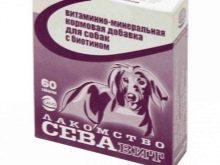
Content rules
In the past, such dogs were considered purely hunting dogs. They slept in barns or outdoors without discomfort. Nowadays, more and more often, setters are taken as companions. Of course, this is reflected in the living conditions of the animals.
"Irishman" will feel great at home.
The best option is a private house with a spacious area that allows you to run and play freely in the fresh air.
A valid alternative is a city apartment. However, in this case, a comfortable bed and tasty food will not be enough. The pet needs intense physical activity. This means that daily long walks with active games, jogging and exercise should become a part of your life.
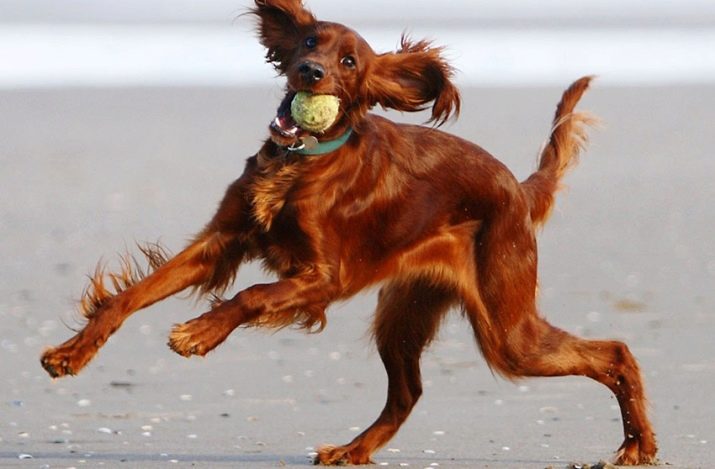
The dog should be walked twice a day. The minimum duration of the walk is 1 hour. It's good if you can devote 1.5-2 hours to this. Representatives of this breed are very patient.They can safely wait to go outside to relieve themselves.
Nevertheless, if you see that the pet asks to use the toilet, it is better to take the animal out for an additional 10-15 minutes for this.
In addition to the cultural behavior of the "Irish", their owners are pleased with the lack of the smell of "dog". At the same time, pets practically do not shed. Thanks to this, wool does not irritate being in the air and is invisible on things.
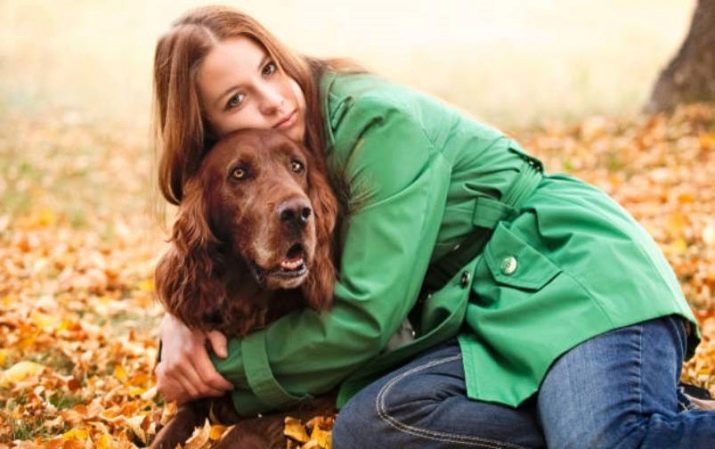
What to feed?
You should start with an important point. A representative of this breed simply needs a special bowl stand. Such dogs are distinguished by rather long legs, therefore bend over to eat every time they feel uncomfortable... In addition, it can even be dangerous for the pet's health (there is a risk of getting volvulus).

As for the calorie content of the diet, it should be calculated taking into account how much energy the dog spends during the day. Individuals receiving high physical activity every day need a high-calorie menu. This is especially true for dogs participating in sporting events, hunting. Show dogs living in apartments need fewer calories.
In general, Irish Setters do not eat much. Therefore, the nutritional value of a portion should be increased precisely not due to the volume, but due to the balance of the BJU.
Good food should contain at least 16% fat. In addition, when choosing, you should pay attention to high-quality ready-to-use premium feed.

Natural food is also acceptable. It can be meat, offal, fish fillets. These products, which are basic, are given to the dog at the rate of 20 g per 1 kg of the pet's body weight. Porridge supplements the diet. Buckwheat and oatmeal are considered especially useful. Seasonal local vegetables can be added to the menu.
Exotic fruits should not be given to the dog, this can lead to an attack of allergies.
Also, adult "Irish" can sometimes be given chicken eggs, low-fat dairy products. Special vitamins will be useful. When choosing the latter, it is worth consulting a veterinarian.

As for the nutrition of puppies, special foods for a specific age group are suitable for them. If the owner prefers natural feeding of the pet, then you can give the babies meat or bone broth with the addition of cereals.

How to care?
Hygiene procedures are necessary not only to maintain the beautiful appearance of the pet, but also for its health. First of all, you should be prepared for thorough grooming of the coat of the Irish Setter. Long hair falls down, gets tangled. Sometimes knots even form. Therefore, it is important to purchase a special comb / brush with natural bristles for regular cleaning of the dog's coat. You need to do this every day.
Owners of setters will have a hard time during the flowering period of various plants. After a walk on a green area, you must carefully examine your pet for thorns, plant seeds and just blades of grass entangled in the dog's "fur coat".
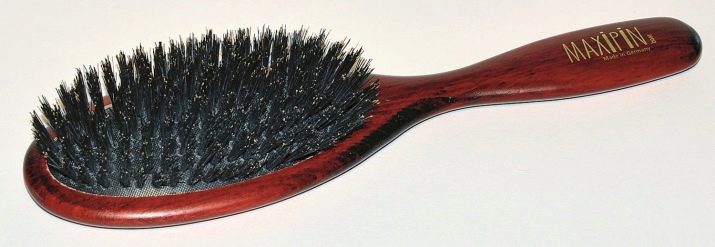
Water treatments should be carried out about once a week or a little less often. You should definitely buy a professional dog shampoo. If you are going to take part in exhibitions, then you can't do without an air conditioner. Some dog breeders also use natural oils to achieve the effect of a satin, flowing coat that shimmers in the rays of light.
Before bathing, you should carefully comb the pet's coat, untangle the knots. If you ignore this moment, it will be much more difficult to do this after a bath or shower.

Thinning the coat is another important procedure to give your dog a more polished appearance. For this, thinning scissors are used. This is not a full-fledged haircut, but only the refinement of the pet's "fur coat", its easy adjustment. Of course, it is better to entrust this matter to a professional.
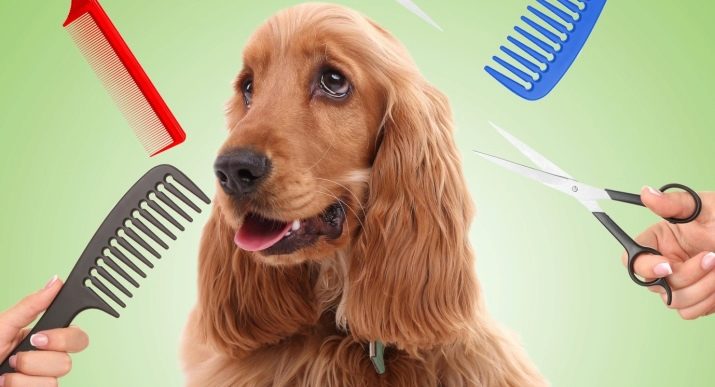
There is a lot of dirt on the streets in autumn and spring. Therefore, it is advisable to dress the "Irishman" in a special protective overalls before a walk.It can be sewn to order in a pet shop, purchased in a store, or made on your own if you have the skills to do this. Any durable waterproof fabric is suitable for a dog suit.

Ear and eye care is a must, as is the case with any breed. They should be inspected periodically and cleaned if necessary with a cotton swab and veterinary lotion. You can wipe the mucous membrane of the eye with infusions of herbs (for example, chamomile).
The ears of the Irish Setter hang down the sides of the head. As a result, they are poorly ventilated. You can help your pet by creating artificial ventilation. To do this, you need to gently take the dog's ear and wave it vigorously.

To prevent the animal from having problems with its teeth, it is necessary to clean them 2-3 times a week, as well as give the dog solid food.... Also, in a specialized store, you should buy a stick that cleans the dog's mouth from tartar.
"Irish" do not like asphalt paths too much. They prefer to run on sand, earth and grass. Therefore, the natural grinding of the claws does not occur. Claws are trimmed 1-2 times a month.
It is advisable to carry out the procedure after the bath. Water and steam soften the nail plate, making the process easier.

Education and training
Raising an Irish Setter is not easy. Although representatives of this breed are quite intelligent, they are difficult to train. The problem is the violent temperament, activity and some stubbornness of the dogs. It is difficult for them to concentrate on one thing for a long time, they want to do something more interesting. However, if you take the learning process seriously and draw up an individual program, there is a chance to get good results.
You can start classes when the puppy reaches 3-4 months. Eight months of age at the latest. It will be more difficult to start training an older pet.
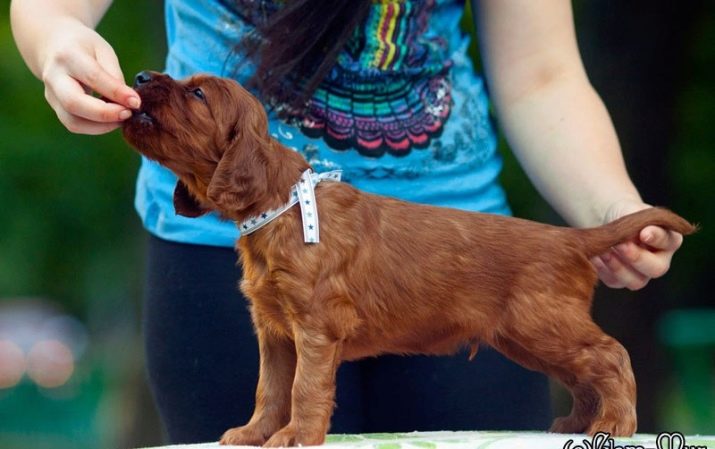
The training course usually includes the basic commands: "sit", "lie down", "fu". The dog is taught to bring an object on the command "fetch", to walk next to the owner during a walk, both on a leash and without him.
Particular attention should be paid to the fulfillment of the requirement "to me!"
Representatives of this breed tend to run away, so it is extremely important to teach the dog to obey this command unquestioningly.
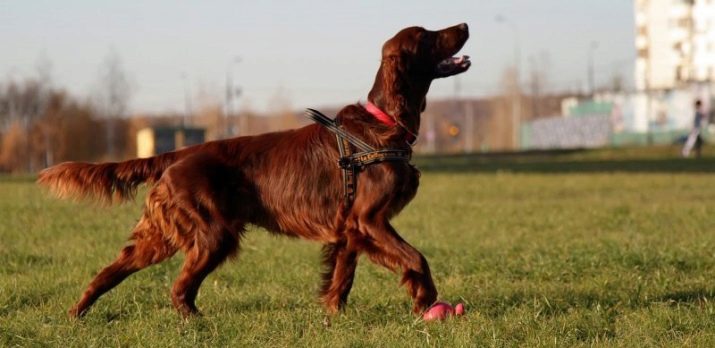
You should not be too zealous in training. As already mentioned, the "Irishman" does not like the mechanical execution of the same actions. It is worth taking this into account and praising the pet, even if he did what was required of him, not immediately or a little wrong. For such a self-sufficient animal, even this will be progress.
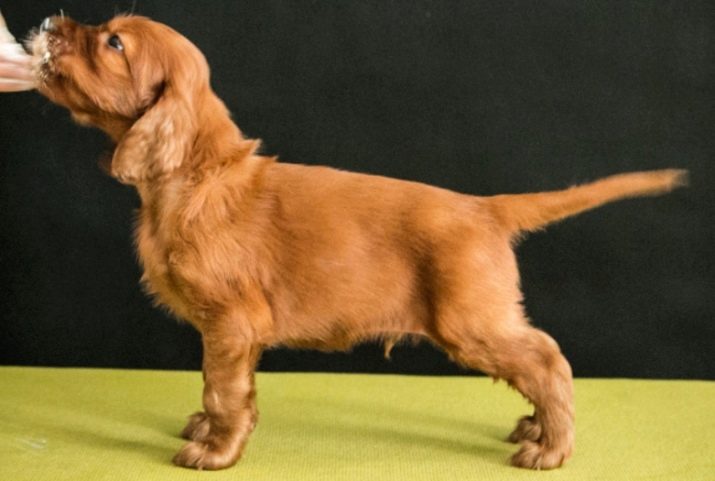
It is not worth scolding a dog for refusing to exercise. It is important to show firmness and perseverance, showing the pet who is in charge here. At the same time, you cannot offend him. If the four-legged friend refuses to learn, you can go for a trick. You just need to show how upset you are by his unwillingness to deal with you. A companionable dog will not withstand remorse and in 9 out of 10 cases will "take pity" on you.

It will also not work to wean the kids from hooliganism with threats and shouts. Punishments can only make the situation worse. Here it is necessary to accept as a fact the hyperactivity and uncontrollability of the breed at a young age. Behavior can be corrected, again, by showing ingenuity. For example, you can replace the puppy's leprosy with physical activity. After a long walk with active games and jogging, the fluffy simply will not have the strength for leprosy. He will peacefully fall asleep in his corner with gratitude for the fun day that the owner gave him.
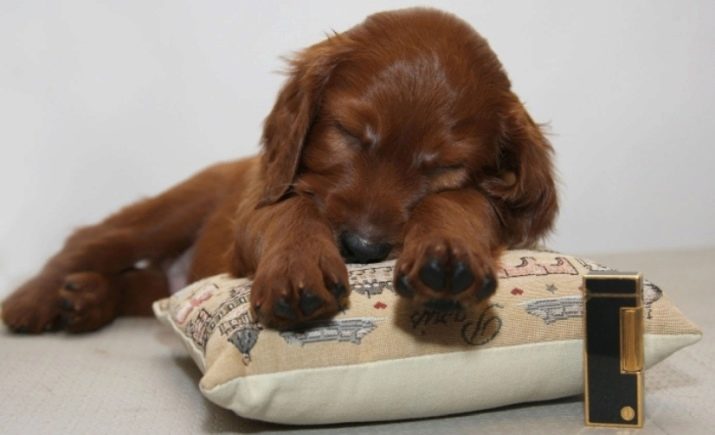
When it comes to hunting, the Irish Setter can be quite helpful here. By nature, the dog is passionate, easy-going. However, he relies more on instinct than on hearing. If the prey is not easy to find, he quickly loses interest in the process for lack of results and impressions. With such an impatient helper, it is better to hunt only in proven places.For a long and consistent search for game, the English setter is more suitable.
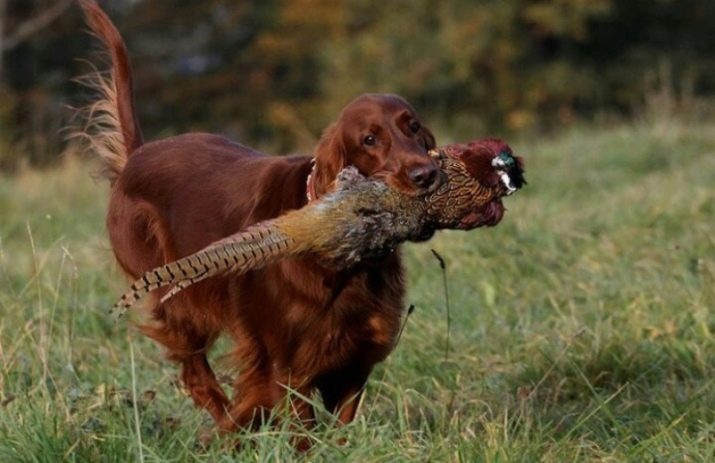
You can find out even more useful and interesting information about Irish Setter dogs in the next video.






































